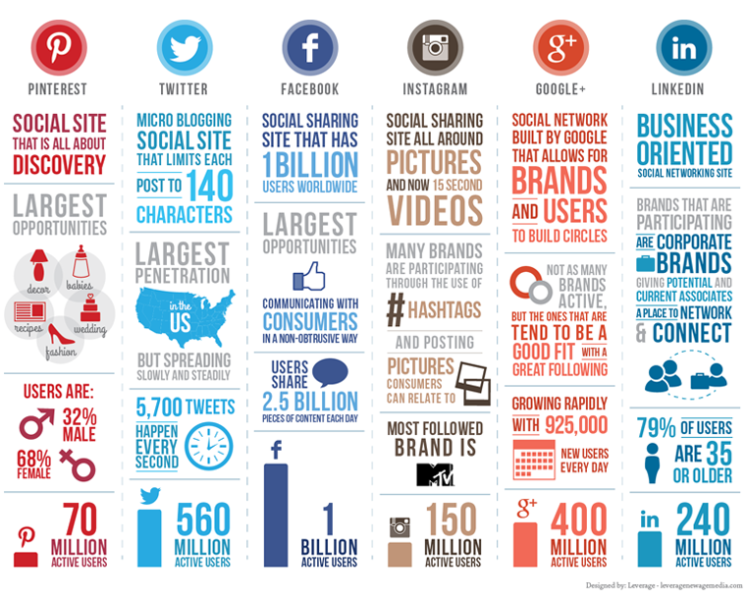The Social Media Shiny Object Syndrome
Are you suffering from a need to be everywhere on social media? Columnist Quinn Whissen has a prescription for how to prevent or cure the symptoms.
![]()
Whether you’re an entrepreneur, business owner, content marketer, any or none of the above, you will eventually be faced with a very serious conundrum: Which social media platforms should you have a presence on?
Pinterest!
Facebook, of course!
LinkedIn! Twitter for sure!
Reddit…Tumblr…InstagramSnapChatFlickrFoursquareOrkut…and on and on.
It’s very tempting to be on all the major networks at once, plus a few niche ones, too. You naturally think you can maximize your reach that way.
The more social platforms you’re on, the more people you can reach and hopefully gain business from. Right?
Well, not necessarily.
This mindset, dear reader, is a trap. In fact, I’ll go so far as to say that it’s an illness among many people in business who are beginning or expanding their social media presence.
This need to “be everywhere” is also known by its scientific name, The Social Media Shiny Object Syndrome. It afflicts businesses young and old, large and small.
Its symptoms are wanting to be everywhere at once and ending up nowhere at all. Its side effects are anxiety, fear of being left out, an inability to perform at peak performance levels and lack of focus and follow-through.

A Note From The Doctor
If you’re currently asking yourself, “What platform should we be on?” the prescription is simple: Be on the platforms upon which you can consistently be active.
Don’t run to the next shiny object as would a young child or dog just because you want to capture more of your audience. If you lose out on 6% of your audience because you’re not somewhere you think you need to be, the amount of time you would need to make it worth it… isn’t worth it.
Focus where it matters. Spend your time wisely and strategically. Be intentional.
[pullquote]If you lose out on 6% of your audience because you’re not somewhere you think you need to be, the amount of time you would need to make it worth it… isn’t worth it.[/pullquote]
If you’re worried you may have fallen ill with the Social Media Shiny Object Syndrome (SMSOS), ask yourself these questions:
- Where does my audience hang out online?
- Can I consistently engage my audience with unique, relevant content on my chosen platform(s)?
- Where do I get the best engagement that actually benefits my business?
- Am I spread too thin to the point where I can’t focus where it matters most?
- Why am I on this platform in the first place, or why do I want to be on it?
8 Lessons To Prevent And/Or Cure SMSOS
1. Just because you have likes, followers and fans doesn’t mean you have a captive audience.
Take them seriously, but don’t be too fooled by numbers. It’s easier to grow an audience than to keep them engaged for a length of time.
Consistently nurture your social media relationships with fresh, relevant content that is thoughtful and not just pushed out by robots.
2. Don’t set fantastical goals that hurt, not help you.
You want 50 leads a month from social media? Good for you. But right now you get two per month. Bummer.
Be realistic about setting benchmarks, and then build strategies around them to help you reach your goal. You’ll not only better align your hopes with reality, but you’ll set yourself up for success right away, rather than failure.
3. Social media is a promotional tool for most businesses, which means you have to have something to promote.
Social media at its best is a way to create and nurture relationships that bring you more business. It’s also a potent promotional tool that lets you share your own content and continually push people back to your website or other channels.
But of course, this entails having something to promote in the first place — don’t just be on social media to be “social.” Have a goal in mind and create the tools (i.e., content) you need to reach people.
Posting photos and links once in a while won’t get you anywhere. Providing relevant, useful content that answers your audience’s questions is the more strategic approach.
[pullquote]Make sure to evaluate what internal resources you have available to manage your chosen platforms effectively and efficiently.[/pullquote]
4. The so-called “Big 4” don’t necessarily need to be your Big 4.
Facebook, Twitter, Google+ and LinkedIn are the biggies in the social media realm. But LinkedIn may not be for you, Google+ seems to be phasing out, and you may see that Instagram continues to produce stellar results.
Again, ask yourself where your audience hangs out online and spend your efforts there rather than wasting time elsewhere. Make sure to evaluate what internal resources you have available to manage your chosen platforms effectively and efficiently.
5. Create unique content for each platform.
This rule will prevent you from jumping onto every platform you can. Remember, each audience can potentially be different on every platform.
A person who follows you on Instagram may not follow you on Twitter, although there may be overlap. Either way, create unique perspectives on what you share on each platform.
It doesn’t take long, but it shows care and attentiveness to your audience niches, along with your understanding of the unique platforms’ etiquette. You’ll also cover yourself for those who do overlap platforms and don’t want to see the exact same thing.
Plus, who wants to see links on Twitter pointing to someone’s Facebook post? Be thoughtful.

6. Don’t cut out what actually works.
Just because you don’t like being on a certain platform doesn’t mean you shouldn’t be on it. This is where the numbers do matter.
Don’t cut out what’s working, but do see if you can shift your perspective to utilizing it in a different way that makes you more comfortable.
7. Master one platform before moving on to the next.
This is a key prescription for small businesses or solopreneurs who are doing it all. Start small and slow, and master a platform before adding another to your workload.
Steer away from fragmenting your focus too much in the beginning so you can stay in the game longer while avoiding burnout.
8. Don’t get hung up on social media in general.
Social media is powerful; there’s no doubt about it. You can use it to boost your brand awareness, generate leads and position yourself as a thought leader.
But when it comes down to your bottom line, plenty of examples show that high lead-generating or top-ranking content doesn’t always get social traction. Always focus on your bottom line to see what benefits your business, and get rid of what doesn’t.
Create a purity of effort in your social media channels to see the best results.
Are you or do you know of a family member, friend or colleague who is suffering from SMSOS? Leave a comment on Facebook, Twitter or our LinkedIn Group to discuss possible treatment options.
Contributing authors are invited to create content for MarTech and are chosen for their expertise and contribution to the search community. Our contributors work under the oversight of the editorial staff and contributions are checked for quality and relevance to our readers. MarTech is owned by Semrush. Contributor was not asked to make any direct or indirect mentions of Semrush. The opinions they express are their own.
Related stories